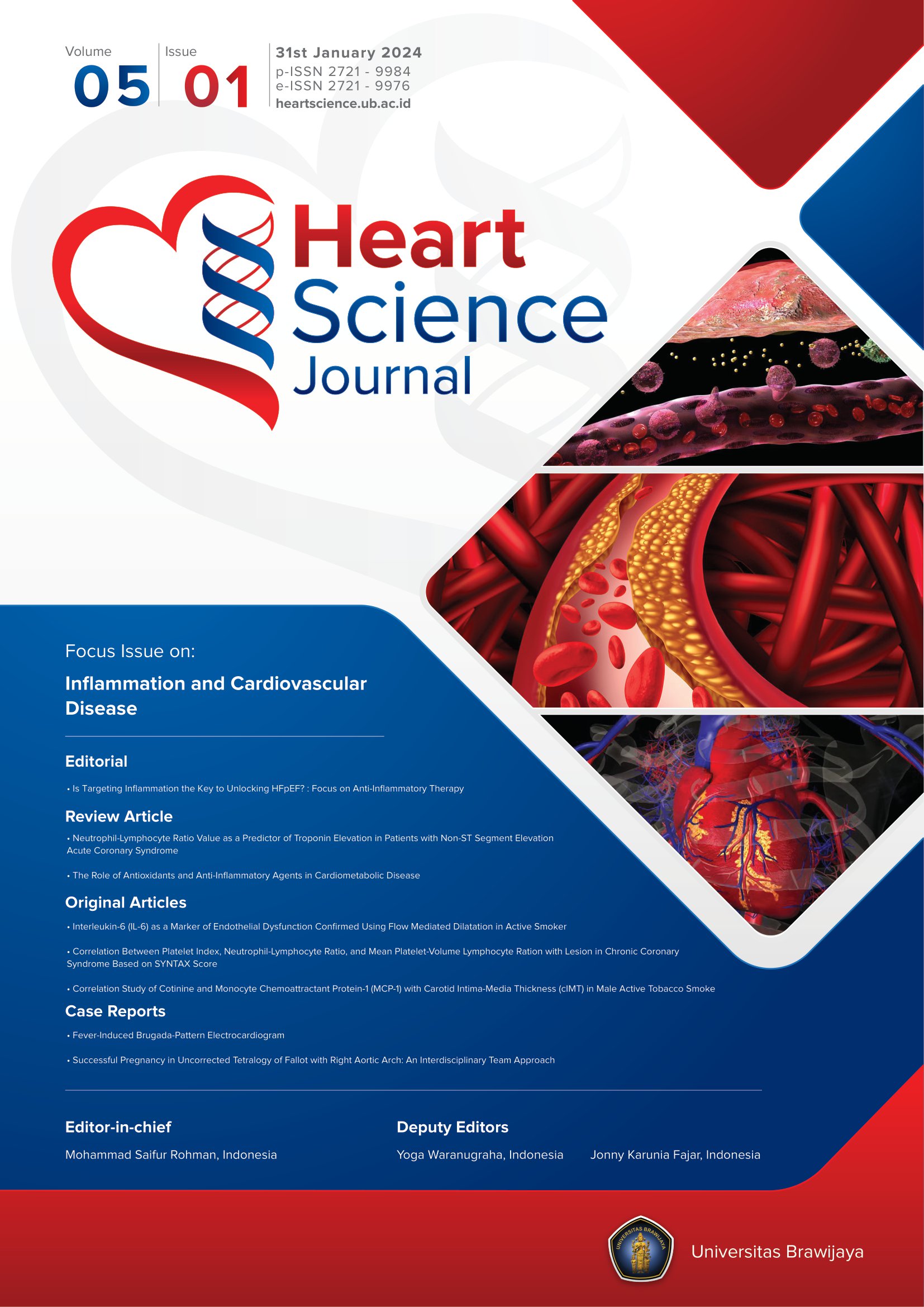Community-Based Cardiac Rehabilitation To Improves Medication Adherence in Stable Coronary Artery Disease
Abstract
Keywords
Full Text:
PDFReferences
Bonow, Braunwald’s Heart Disease - A Textbook of Cardiovascular Medicine. Philadelphia: Elsevier Saunders:, 2012. p299
Pusat Komunikasi Publik Sekretariat Jenderal Kementerian Kesehatan RI. http://www.depkes.go.id/article/view/201410080002/lingkungan-sehat-jantung-sehat.html#sthash.8rONhkYv.dpuf
Atmiroseva. Inpatient Readmission Insidence of National Health Insurance Patients at Partner Hospitals of BPJS-Health in Sukabumi 2015. Journal of Indonesian health policy and administration; 2017. p20
Authors/Task Force m, Windecker S, Kolh P, Alfonso F, Collet JP, Cremer J, et al. 2014 ESC/EACTS Guidelines on myocardial revascularization: The Task Force on Myocardial Revascularization of the European Society of Cardiology (ESC) and the European Association for Cardio-Thoracic Surgery (EACTS)Developed with the special contribution of the European Association of Percutaneous Cardiovascular Interventions (EAPCI). Eur Heart J. 2014; 35(37):2541-619.
Pamala J, Cheng K. A systematic review and meta‐analysis on the effectiveness of education on medication adherence for patients with hypertension, hyperlipidaemia and diabetes. J Adv Nurs. 2019;00:1–17.
Muniez J, Gomez J, Perez S. The effect of post-discharge educational intervention on patients in achieving objectives in modifiable risk factors six months after discharge following an episode of acute coronary syndrome, (CAM-2 Project): a randomized controlled trial. Health and Quality of Life Outcomes 2010, 8:137
Piepoli MF, Corra U, Benzer W et al. Secondary prevention through cardiac rehabilitation: physical activity counseling and exercise training. European Heart Journal. 2010;31:1967-1976.
Swain DP, Brawner CA, Chambliss HO et al. ACSM’s resource manual for guidelines for exercise testing and prescription seventh edition. Wolters Kluwer. 2014.
Dimulescu DR. When should cardiac rehabilitation be started after a cardiovascular event?. Medicographia. 2012;34(4):427-439.
Niebauer J. Cardiac rehabilitation manual. Springer. 2011:151-162.
Dalal HM, Doherty P, Taylor RS. Cardiac rehabilitation. British Medical Journal. 2015;351:h5000.
Perk J, Mathes P, Gohlke H et al. Cardiovascular prevention and rehabilitation. Springer. 2007.
Gellis D, Kang Y. Meta-Analysis of the Effect of Cardiac Rehabilitation Interventions on Depression Outcomes in Adults 64 Years of Age and Older. Am J Cardiol 2012;110:1219–1224
Spertus JA, Winders JA, Dewhurst Ta. Development and Evaluation of the: A New Functional Status Measure for Coronary Artery Disease. JACC. 1995; 25 No 2:333-341.
Mosleh S, Bond C, Lee a. Effects of community based cardiac rehabilitation: Comparison with a hospital-based programme. European Journal of Cardiovascular Nursing 2015, Vol. 14(2) 108 –116
DOI: https://doi.org/10.21776/ub.hsj.2020.001.01.2
Refbacks
- There are currently no refbacks.
Copyright (c) 2020 Heart Science Journal
License URL: https://creativecommons.org/licenses/by/4.0/









